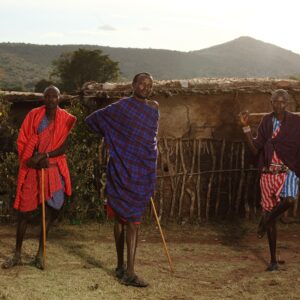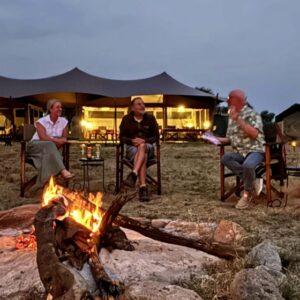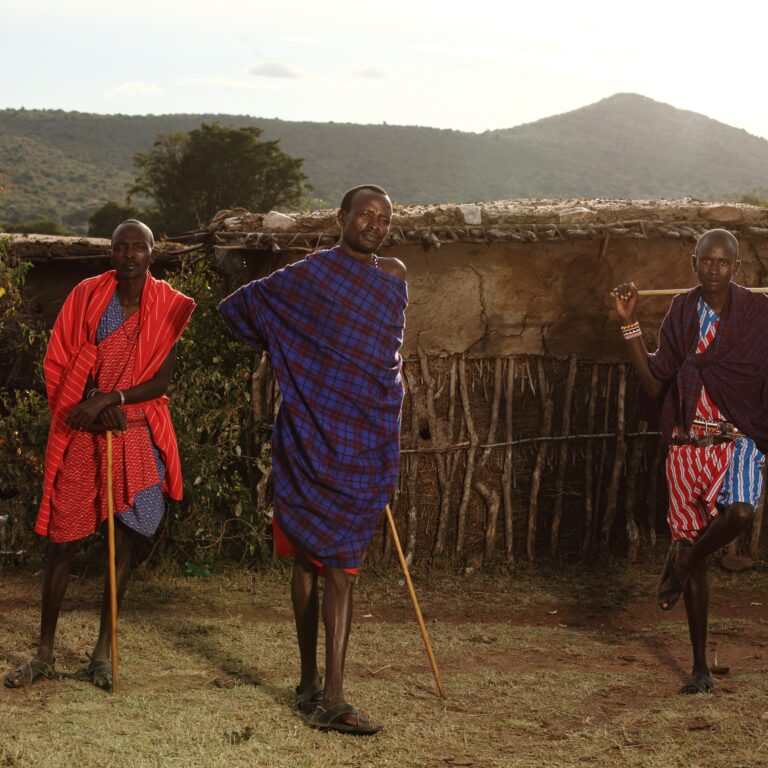What to Pack for a Solo Travelers on Safari in Tanzania.
Embarking on a solo safari to Tanzania is an exhilarating prospect. It’s a journey of unparalleled freedom, allowing you to immerse yourself fully in the rhythm of the wild, connect with local cultures on your own terms, and discover a profound sense of independence amidst breathtaking landscapes. While the core packing principles for a Tanzanian safari remain consistent for all travelers, a solo adventure brings unique considerations Tanzania Safari Packing List For Solo Travelers. Efficiency, security, and preparedness become even more paramount when you’re the sole planner and participant.
This comprehensive packing list is tailored for the solo explorer, ensuring you’re well-equipped for every facet of your Tanzanian safari, from game drives across the Serengeti to serene evenings under the stars.
The Solo Safari Mindset: Pack Smart, Not Heavy
When traveling alone, the key is to pack light yet adequately. The safari environment can be unpredictable, and you’ll want to be prepared without being burdened by heavy luggage. Create a packing list and review it several times to eliminate unnecessary items. Focus on functionality and versatility – choose gear that serves multiple purposes. When traveling solo, every item in your bag counts. You’re responsible for your own luggage, and overpacking can quickly become a burden. Embrace minimalism and multifunctionality.
Key Solo Traveler Principles:
Lightweight & Compact: Prioritize items that are light, can be rolled tightly, and don’t add unnecessary bulk.
Versatility: Choose clothing and gear that can serve multiple purposes.
Security: Think about protecting your valuables and personal safety.
Self-Reliance: Pack essentials that ensure your comfort and well-being, as you’re your primary support system.
Luggage: The Foundation of Your Pack
Choosing the right luggage sets the foundation for your packing. Opt for a soft-sided duffel bag which is easier to fit into transport vehicles that navigate the rough terrain. Ensure it’s durable and waterproof to withstand unpredictable weather. A daypack is also essential for daily excursions, allowing you to carry essentials without dragging along your entire luggage.
Soft-Sided Duffel Bag (Crucial!): This is your primary luggage. Most safari itineraries, especially those involving light aircraft transfers between parks (common for reaching remote camps), have strict luggage weight limits (often 15-20 kg or 33-44 lbs, including carry-on) and require soft-sided bags that can be squeezed into small cargo compartments. Choose a durable, water-resistant duffel.
Daypack (15-25 liters): Your constant companion on game drives and short excursions. Ideal for camera gear, water, an extra layer, snacks, and personal essentials.
Small Cross-body Bag/Money Belt (for travel days): For keeping passports, money, and cards secure and close to your body, especially in transit hubs.
Clothing: Layering for All Climates
The weather in Tanzania can range dramatically, from hot days to chilly nights. Therefore, layering is essential. Start with moisture-wicking base layers, a middle layer for insulation (like a fleece jacket), and a waterproof outer layer. Neutral colors are ideal since they help you blend into the environment, keeping your wildlife observations unobtrusive. Tanzania’s diverse altitudes mean temperatures can vary dramatically within a single day. Layering in neutral, earthy tones is paramount.
Tops (3-4 short-sleeved, 2-3 long-sleeved):
Material: Lightweight, breathable, quick-drying fabrics like cotton, linen, or moisture-wicking synthetics Tanzania Safari Packing List For Solo Travelers.
Colors: Khaki, olive green, tan, beige, brown, grey. Avoid bright colors (can startle animals) and dark blues/blacks (attract tsetse flies) ultimate Tanzania Safari Packing List For Solo Travelers.
Long-sleeved: Essential for sun protection, insect bite prevention (especially at dawn/dusk), and warmth in cooler mornings/evenings. Choose roll-up sleeve options.
Bottoms (2-3 pairs):
Safari Trousers/Pants: Lightweight, durable, and quick-drying. Convertible zip-off pants are a solo traveler’s dream, offering flexibility.
Shorts (1 pair): For relaxing at camp or very warm afternoons.
Avoid: Heavy denim (slow to dry, bulky) and white clothing (gets dirty instantly).
Warm Layers (1-2):
Fleece Jacket/Sweater: For chilly early morning game drives and evenings around the campfire.
Lightweight Puffy Jacket: A compressible down or synthetic insulated jacket provides excellent warmth for its weight.
Outerwear (1):
Waterproof/Windproof Shell: A lightweight jacket to protect against unexpected rain showers and wind chill in open vehicles.
Nightwear: Comfortable, modest sleepwear.
Swimwear (1 set): Many lodges have pools.
Undergarments: Sufficient for the duration, or plan for laundry.
Socks (5-7 pairs): Moisture-wicking hiking socks for comfort during game drives, plus lighter socks for evenings.
Footwear: Comfort and Protection
Your feet will take you through thrilling adventures, so they deserve the best protection. A pair of sturdy, ankle-high hiking boots will provide excellent support and keep your feet safe from rough terrain. In addition, pack lightweight, breathable sandals or slip-ons for relaxing around your campsite or lodge.
Comfortable Closed-Toe Shoes. Well-broken-in sneakers, walking shoes, or light hiking boots are perfect for daily wear, walking around camp, and any light nature walks.
Sandals/Flip-Flops. For relaxing at camp or after a long day of game drives.
Headwear & Eye Protection
Wide-Brimmed Hat. Absolutely essential for sun protection. Choose one with a chin strap to keep it secure in windy conditions.
Sunglasses. Protect your eyes from harsh glare and UV rays.
Prescription Glasses/Contacts (and solution). Bring a spare pair of glasses if you rely on contacts, as dust and dry air can make them uncomfortable.
Health, Hygiene & Safety (Extra Emphasis for Solo Travel)
Solo travel requires heightened attention to health and safety. Pack a comprehensive medical kit with first-aid supplies, basic medications, and any necessary prescriptions. Don’t forget insect repellent and sunscreen. Hygiene items such as biodegradable toiletries and hand sanitizer are also crucial for your comfort and safety.
Personal First Aid Kit: More comprehensive for solo travelers. Include: pain relievers, anti-diarrhea medication, antacids, antihistamines, blister treatment (moleskin, blister patches), antiseptic wipes, bandages, any prescription medications (with copies of prescriptions), and rehydration salts.
Hand Sanitizer & Wet Wipes: Use liberally. Remember to pack out all used wet wipes as they don’t decompose.
Insect Repellent (with DEET): Crucial for preventing mosquito and tsetse fly bites.
Malaria Prophylaxis: Consult your doctor about anti-malarial medication.
Small Towel (Quick-Dry): Convenient for various uses.
Lip Balm with SPF: Prevents chapped lips in dry, sunny conditions.
Personal Alarm/Whistle (Optional): For peace of mind in emergencies.
Photography & Electronics
Documenting your safari experience is a must! Bring a digital camera with a good zoom lens to capture the stunning wildlife. Additionally, pack spare batteries and memory cards. A portable power bank will help keep your devices charged during long day trips. Consider taking a lightweight tripod for stable shots during golden hour.
Camera with Telephoto Lens. (Refer to previous article for details). For solo travelers, a lightweight mirrorless camera system might be more manageable than a bulky DSLR.
Extra Batteries & Memory Cards. Crucial, as you won’t have anyone else’s spare.
Portable Power Bank. For charging phones, cameras, and other small devices. Charging points in camps can be limited.
Universal Travel Adapter. Type G (UK) is common, but a universal one is safest.
Headlamp/Flashlight. For navigating camp at night or emergencies.
Ziploc Bags/Dry Bags. For protecting electronics from dust and moisture.
Essential Documents & Money
Ensure you bring necessary documents like your passport, visas, travel insurance, and vaccination records. It’s wise to carry both cash and credit cards, as some smaller establishments may not accept card payments. Keep essential documents secure in a waterproof pouch to prevent any mishaps.
Passport. Valid for at least 6 months beyond your return date, with sufficient blank pages.
Visa. Obtain your Tanzanian visa in advance (e-visa often available).
Yellow Fever Vaccination Certificate. If applicable (check your country’s requirements).
Flight Tickets & Itinerary. Printed and digital copies.
Travel Insurance Details. Print out your policy number and emergency contact details.
Photocopies/Digital Copies. Keep copies of your passport, visa, and insurance separate from the originals. Email them to yourself or store them in cloud-based storage.
Money. US dollars (small denominations for tips) are widely accepted. Have a mix of cash and credit/debit cards. Inform your bank of your travel plans. Consider a second credit card stored separately as a backup.
Miscellaneous but Important
Don’t overlook miscellaneous items that could enhance your experience. A reusable water bottle, binoculars for wildlife viewing, and a travel pillow can bring comfort during your journey. A guidebook or downloaded safari apps can help you connect with your environment even more.
Reusable Water Bottle. Stay hydrated and reduce plastic waste.
Small Notebook & Pen. For journaling, jotting down observations, or important notes.
Book/E-reader: For downtime.
Small Gifts for Local Guides/Staff (Optional). A thoughtful gesture.
Duct Tape/Gear Repair Kit. For minor equipment fixes on the go.
Comfort Items. Your favorite tea bags, a small pillow (inflatable ones are great), or anything else that brings you comfort.








